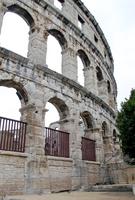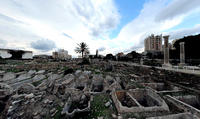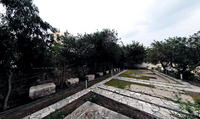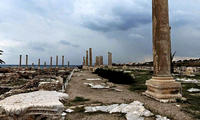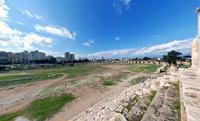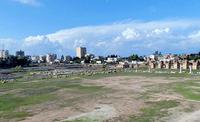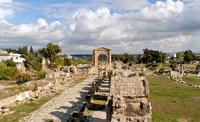You are in: Middle East -> Lebanon -> Tyre, and traditional search or Image Gallery will yield results of this site only
Tyre
| Site number: | 299 |
|
| Type of site: | Cultural | |
| Date: | Roman times | |
| Date of Inscription: | 1984 | |
| Location: | Middle East, Lebanon, Governorate of South Lebanon, City and District of Tyre | |
Up to 75 images are shown here. Click on each for more details or on Image Gallery for more images.
Six official UN languages:
Arabic,
Chinese,
English,
French,
Russian,
Spanish
Other languages: Breton, Catalan, Czech, Dutch, Farsi, Finnish, German, Greek, Hebrew, Indonesian, Italian, Japanese, Lithuanian, Norwegian-bokmål, Polish, Portuguese, Slovak, Slovenian, Swedish
Other languages: Breton, Catalan, Czech, Dutch, Farsi, Finnish, German, Greek, Hebrew, Indonesian, Italian, Japanese, Lithuanian, Norwegian-bokmål, Polish, Portuguese, Slovak, Slovenian, Swedish
| Description: | As indicated by legends, purple dye originated in Tyre. In its time this grand Phoenician city ruled the seas and established thriving colonies such as Cadiz and Carthage, but at the end of the Crusades its historical role weakened. The site holds significant archaeological remains, mainly from the Roman era. --WHMNet paraphrase from the description at WHC Site, where additional information is available. For 360 degree imaging of this site, click here. | |
| Tyre (Arabic صور Ṣūr, Phoenician Ṣur, Hebrew צור Tzor, Tiberian Hebrew צר Ṣōr, Akkadian Ṣurru, Greek Τύρος Týros) is a city in the South Governorate of Lebanon. With 117,100 inhabitants, Tyre juts out from the coast of the Mediterranean Sea and it is located about 80 km (50 mi) south of Beirut. The name of the city means "rock". The adjective for Tyre is Tyrian, and the inhabitants are Tyrians. Tyre is an ancient Phoenician city and the legendary birthplace of Europa and Elissa (Dido). Today it is the fourth largest city in Lebanon and houses one of the nation's major ports known locally in French as Soûr. Tyre is a popular destination for tourists. The city has many ancient sites, including its Roman Hippodrome which was added to UNESCO's list of World Heritage Sites in 1979 (Resolution 459). --Wikipedia. Text is available under the Creative Commons Attribution-ShareAlike License. For 360 degree imaging of this site, click here. | ||
| Source: | http://whc.unesco.org/en/list/299 | |
| Reference: | 1. UNESCO World Heritage Center, Site Page. | |








